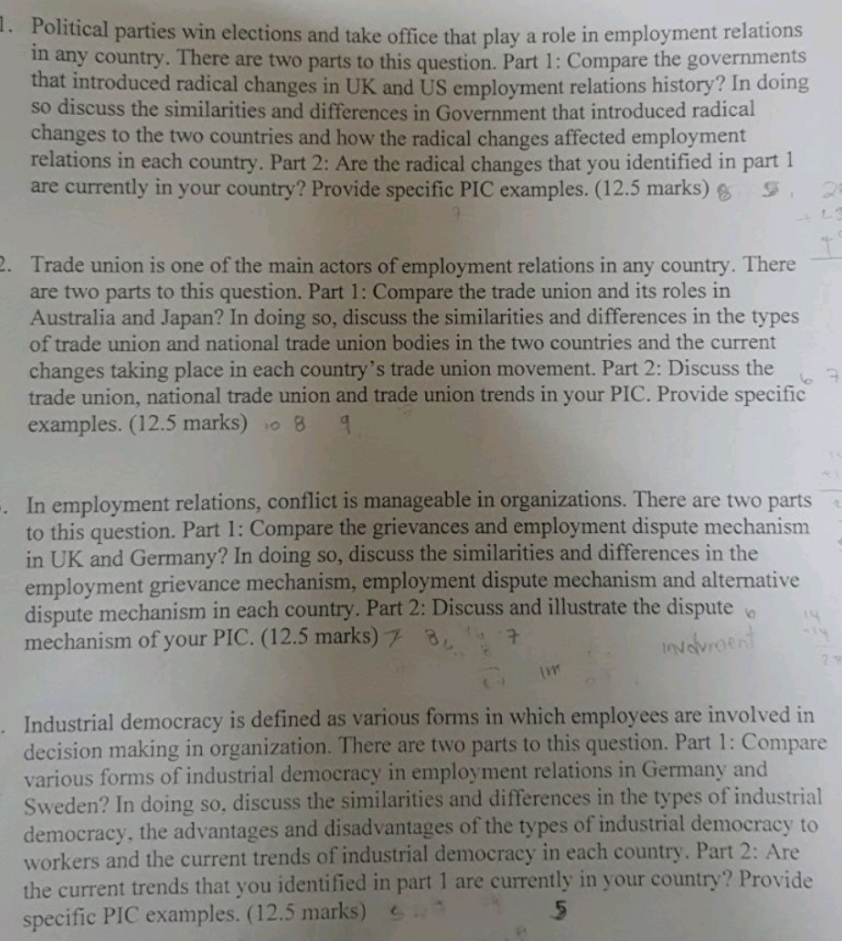comparative environment
Political parties win elections and take office that play a role in employment relations in any country. There are two parts to this question. Part 1: Compare the governments that introduced radical changes in UK and US employment relations history? In doing so discuss the similarities and differences in Government that introduced radical changes to the two countries and how the radical changes affected employment relations in each country. Part 2: Are the radical changes that you identified in part 1 are currently in your country? Provide specific PIC examples. (12.5 marks) & Trade union is one of the main actors of employment relations in any country. There are two parts to this question. Part 1: Compare the trade union and its roles in Australia and Japan? In doing so, discuss the similarities and differences in the types of trade union and national trade union bodies in the two countries and the current changes taking place in each country's trade union movement. Part 2: Discuss the trade union, national trade union and trade union trends in your PIC. Provide specific examples. (12.5 marks) 1 8 9 In employment relations, conflict is manageable in organizations. There are two parts to this question. Part 1: Compare the grievances and employment dispute mechanism in UK and Germany? In doing so, discuss the similarities and differences in the employment grievance mechanism, employment dispute mechanism and alternative dispute mechanism in each country. Part 2: Discuss and illustrate the dispute mechanism of your PIC. (12.5 marks) 7 8. 7 involvment IM Industrial democracy is defined as various forms in which employees are involved in decision making in organization. There are two parts to this question. Part 1: Compare various forms of industrial democracy in employment relations in Germany and Sweden? In doing so, discuss the similarities and differences in the types of industrial democracy, the advantages and disadvantages of the types of industrial democracy to workers and the current trends of industrial democracy in each country. Part 2: Are the current trends that you identified in part 1 are currently in your country? Provide specific PIC examples. (12.5 marks)







